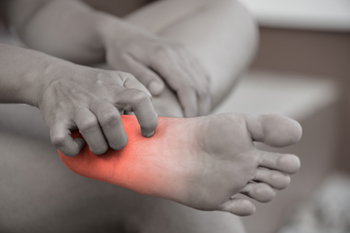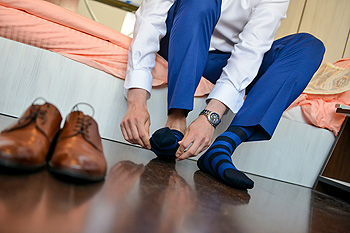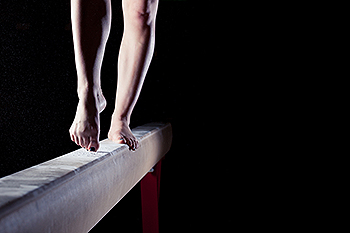Items filtered by date: October 2022
Do Your Child's Feet Hurt?
How Bad Can Peripheral Neuropathy Get?

The peripheral nervous system consists of nerves that reach receptors in the skin for sensations and muscle fibers for motion. Everything starts in the spinal cord and nerves branch out until they reach their destinations. Specific parts of the brain are responsible for moving muscles or sensing pain locations. Peripheral neuropathy is a term that refers to damage to the peripheral nervous system. Different types of peripheral neuropathy create different symptoms. Sensory symptoms include numbness, pain, hot or cold sensations, needle-pricking sensations, and complete loss of sensation. Motor manifestations present themselves as muscle weakness, twitching, paralysis, tremors, and severe cramps. Diagnosing peripheral neuropathy is challenging, both in the condition created and the underlying cause. The condition and its cause are especially important if there is a lack of sensation, as this can make extremities liable to injury without care. Wounds can become infected, and limbs can be in danger. If you feel you might have peripheral neuropathy, contact a podiatrist for proper diagnosis and treatment.
Neuropathy
Neuropathy can be a potentially serious condition, especially if it is left undiagnosed. If you have any concerns that you may be experiencing nerve loss in your feet, consult with Charles Perry, DPM from Ohio. Our doctor will assess your condition and provide you with quality foot and ankle treatment for neuropathy.
What Is Neuropathy?
Neuropathy is a condition that leads to damage to the nerves in the body. Peripheral neuropathy, or neuropathy that affects your peripheral nervous system, usually occurs in the feet. Neuropathy can be triggered by a number of different causes. Such causes include diabetes, infections, cancers, disorders, and toxic substances.
Symptoms of Neuropathy Include:
- Numbness
- Sensation loss
- Prickling and tingling sensations
- Throbbing, freezing, burning pains
- Muscle weakness
Those with diabetes are at serious risk due to being unable to feel an ulcer on their feet. Diabetics usually also suffer from poor blood circulation. This can lead to the wound not healing, infections occurring, and the limb may have to be amputated.
Treatment
To treat neuropathy in the foot, podiatrists will first diagnose the cause of the neuropathy. Figuring out the underlying cause of the neuropathy will allow the podiatrist to prescribe the best treatment, whether it be caused by diabetes, toxic substance exposure, infection, etc. If the nerve has not died, then it’s possible that sensation may be able to return to the foot.
Pain medication may be issued for pain. Electrical nerve stimulation can be used to stimulate nerves. If the neuropathy is caused from pressure on the nerves, then surgery may be necessary.
If you have any questions, please feel free to contact our offices located in Cambridge and Zanesville, OH . We offer the newest diagnostic and treatment technologies for all your foot care needs.
How Poor Circulation Can Affect the Feet

Healthy blood flow, which is known as circulation, is an important part of how we live. The purpose of the circulatory system is to deliver oxygen and nutrients throughout our cells, in addition to clearing out waste materials in the body. The feet are often the first parts of the body to notice if poor circulation exists, and they may become blue, cold, or swollen. Some people develop a tingling sensation or their feet may become numb. Poor circulation is often seen in diabetic patients, and this may be a result of hardened and narrowed arteries. Additionally, people who sit for extended periods may develop poor circulation and it is suggested to walk for small amounts of time during the day to provide adequate movement. Mild relief may occur when compression socks are worn and these may help restore blood flow to the feet. If you suffer from poor circulation in the feet, please confer with a podiatrist who can determine what the cause is as well as provide effective treatment options.
Poor circulation is a serious condition and needs immediate medical attention. If you have any concerns with poor circulation in your feet contact Charles Perry, DPM of Ohio. Our doctor will treat your foot and ankle needs.
Poor Circulation in the Feet
Poor blood circulation in the feet and legs is can be caused by peripheral artery disease (PAD), which is the result of a buildup of plaque in the arteries.
Plaque buildup or atherosclerosis results from excess calcium and cholesterol in the bloodstream. This can restrict the amount of blood which can flow through the arteries. Poor blood circulation in the feet and legs are sometimes caused by inflammation in the blood vessels, known as vasculitis.
Causes
Lack of oxygen and oxygen from poor blood circulation restricts muscle growth and development. It can also cause:
- Muscle pain, stiffness, or weakness
- Numbness or cramping in the legs
- Skin discoloration
- Slower nail & hair growth
- Erectile dysfunction
Those who have diabetes or smoke are at greatest risk for poor circulation, as are those who are over 50. If you have poor circulation in the feet and legs it may be caused by PAD and is important to make changes to your lifestyle in order to reduce risk of getting a heart attack or stroke. Exercise and maintaining a healthy lifestyle will dramatically improve conditions.
As always, see a podiatrist as he or she will assist in finding a regimen that suits you. A podiatrist can also prescribe you any needed medication.
If you have any questions please feel free to contact our offices located in Cambridge and Zanesville, OH . We offer the newest diagnostic and treatment technologies for all your foot and ankle needs.
Space in a Good Pair of Shoes

Although many shoe shoppers are primarily concerned with finding a fashionable pair of shoes that suits their specific style preferences, this might not be the best way to go about shoe shopping. First and foremost, shoes must fit the foot properly and comfortably. One critical aspect of what makes a shoe fit properly is the amount of space in the toe box. As a general rule, it is not a good idea for your toes to be pressed up against the front of the shoe. It is important to remember that your feet move around while you are in motion (walking, running, etc.), and so you need sufficient room in the toe box to account for this foot movement. So the next time that you are out shoe shopping and are trying a new pair of shoes on, you might consider moving around in them and noticing if you can feel the tips of your toes touching the front of the shoe. If you do, select a shoe with a larger toe box. Contact a podiatrist for more tips on proper shoe fitting.
Finding a properly-fitting shoe is important in reducing injuries and preventing foot problems. For more information about treatment, contact Charles Perry, DPM from Ohio. Our doctor will treat your foot and ankle needs.
Proper Shoe Fitting
A common concern when it comes to foot health, having properly fitted shoes can help prevent injuries to the foot. Out feet affect our posture and gait, which in turn affects the biomechanics and overall bodily structure. With 33 joints, 26 bones, and over 100 ligaments, the potential for serious injury is much greater than one realizes. Although the feet cease growth in adulthood, they still change shape as they mature. Here are some factors to consider when it comes to investing in proper fitting shoes:
- Be sure the shoes fit correctly right away
- Ensure the ball of your foot fits comfortably in the widest portion of the shoes
- Even though they may look fashionable, improper fitting shoes can either create adverse conditions or exacerbate existing ones you may already have
- Walk along a carpeted surface to ensure the shoes comfortably fit during normal activity
Keeping in mind how shoes fit the biomechanics of your body, properly-fitting shoes are vitally important. Fortunately, it is not difficult to acquire footwear that fits correctly. Be sure to wear shoes that support the overall structure of your body. Do your feet a favor and invest in several pairs of well-fitted shoes today.
If you have any questions please feel free to contact our offices located in Cambridge and Zanesville, OH . We offer the newest diagnostic and treatment technologies for all your foot and ankle needs.
Ankle and Foot Injuries in Gymnastics

Ankle and foot injuries are common problems gymnasts deal with. In gymnastics, there is a high likelihood of lower body injuries in gymnastics because of the high impact forces, repetitive movements, and the preponderance of youth participants who are still growing. These young people are subjected to many hours of training, often year-round, and are generally encouraged to specialize in gymnastics to the exclusion of other sports early on. This causes a higher incidence of burnout, overuse injuries, and negatively impacts their overall athletic potential long-term. Research shows that there are also a lack of strength and conditioning methods in the sport that increase risks of injury. The most common foot and ankle injuries in gymnastics include acute and overuse injuries. Acute injuries are usually caused by an incident and tend to be more severe. These include ankle sprains and bone fractures. Overuse injuries happen when multiple incidents cause an injury to accumulate over time. Such injuries include things like growth plate irritations, tendonitis issues, and stress fractures. These injuries plague gymnasts for their gymnastic careers and beyond. Some of these athletes just tape their ankles and take over-the-counter pain relievers and live with the pain while participating in the sport. If you are or have been a gymnast and suffer from foot and ankle injuries, it is suggested that you consult with a podiatrist who can not only help in the diagnosis and treatment if an injury has been sustained but can provide important injury prevention information as well.
Sports related foot and ankle injuries require proper treatment before players can go back to their regular routines. For more information, contact Charles Perry, DPM of Ohio. Our doctor can provide the care you need to keep you pain-free and on your feet.
Sports Related Foot and Ankle Injuries
Foot and ankle injuries are a common occurrence when it comes to athletes of any sport. While many athletes dismiss the initial aches and pains, the truth is that ignoring potential foot and ankle injuries can lead to serious problems. As athletes continue to place pressure and strain the area further, a mild injury can turn into something as serious as a rupture and may lead to a permanent disability. There are many factors that contribute to sports related foot and ankle injuries, which include failure to warm up properly, not providing support or wearing bad footwear. Common injuries and conditions athletes face, including:
- Plantar Fasciitis
- Plantar Fasciosis
- Achilles Tendinitis
- Achilles Tendon Rupture
- Ankle Sprains
Sports related injuries are commonly treated using the RICE method. This includes rest, applying ice to the injured area, compression and elevating the ankle. More serious sprains and injuries may require surgery, which could include arthroscopic and reconstructive surgery. Rehabilitation and therapy may also be required in order to get any recovering athlete to become fully functional again. Any unusual aches and pains an athlete sustains must be evaluated by a licensed, reputable medical professional.
If you have any questions please feel free to contact our offices located in Cambridge and Zanesville, OH . We offer the newest diagnostic and treatment technologies for all your foot and ankle needs.


